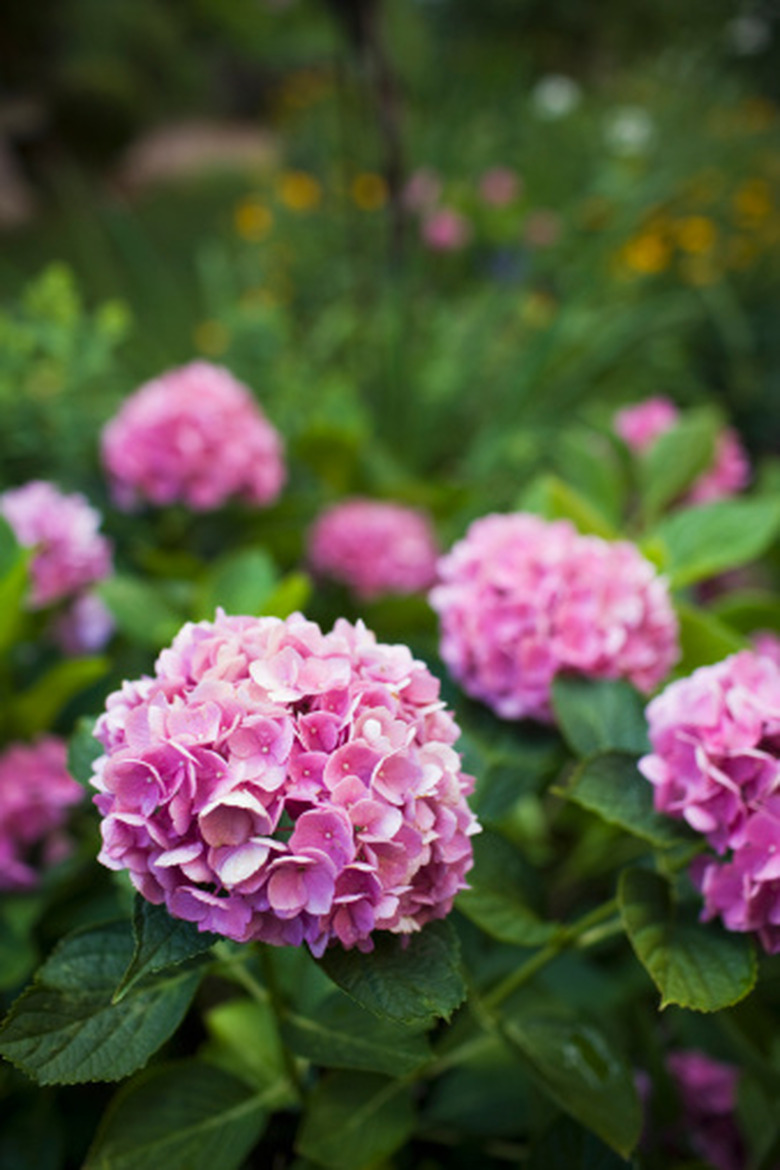How To Bring Back A Hydrangea Bush
Things Needed
- Shovel
- Burlap sack
- Soil pH test
- Lime
- Sulfur
- Mulch
- Pine needles
- Bypass shears
- Garden hose
- Soaker ball
According to Vintage Gardens.com, hydrangeas have been a staple in American gardens since they came from Japan. Hydrangea bushes can decline in health for a number of reasons. Fungal infections, soil pH problems, pests and improper culture practices such as over fertilizing can also slowly kill your hydrangea plant. Proper hydrangea care often depends on the type of bush your are growing. Lacecap, mophead, oakleaf and Annabelle have their own specific growing requirements; however, there are certain essential practices that you can employ to treat them all.
Step 1
Place your hydrangea bush in an area where it receives at least four hours of sunlight. Hydrangea can produce fewer leaves and blossoms when they are not given enough light. Press your shovel 3 inches away from the base of your hydrangea bush and 6 inches deep. Lift the plant up from underneath to push up its entire root system. Wrap a moist burlap sack around the root system to keep it from drying out.
Step 2
Dig a 6-inch hole in the new planting location to test the soil's pH range. Hydrangeas must be planted in a soil pH range of 5.5 to 7.5. to absorb to soil's nutrients. Anything out of this range will produce a dying plant. In fact, yellowing of leaves is one of the most common signs of soil that is too alkaline. Follow the soil pH test according to its instructions. Add lime to acidic soil or soil under 5.5 and sulfur to alkaline soil that is over 7.5.
Step 3
Make a hole that is twice the size as its root ball and at the same depth as the plant was planted in its former location. Remove the burlap sack. Place the plant in the new sunnier location and pack soil around the base. Water the planting area thoroughly.
Step 4
Spread a 3-inch layer of organic mulch such as pine needles 3 inches from the base out to the dripline of the plant. The dripline is the area that is underneath the outermost branches of the plant. Hydrangea roots can dry out if not insulated with mulch.
Step 5
Prune off damaged or diseased looking branches with a pair of bypass shears. You can prune in the spring much of Annabella and peegee types of hydrangeas without harming next year's blossoms because they flower on new wood. Mophead and oakleaf types should only have their damaged tips removed or you risk harming next years blossoms because they flower on old wood. Make 45-degree downward cuts near the branch collar or healthy outward growing buds when pruning.
Tip
Water your hydrangea deeply by allowing a slow amount of water run from a garden hose or soaker ball at the dripline of the plant. Moisten the soil but do not saturate the soil. When temperatures exceed 85 degrees Fahrenheit., increase the watering to keep the root ball moist.
Warning
Avoid growing hydrangea bushes if your own pets, because their toxicity levels can cause digestive and other health problems.
